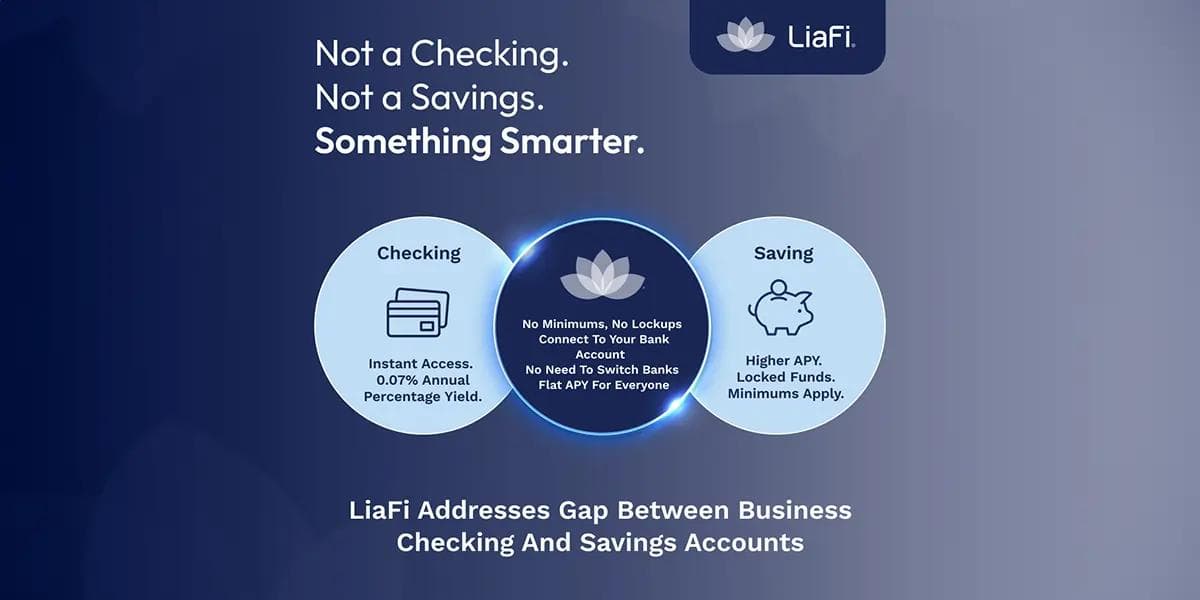The Changing PRS Sector: Why Institutional Investors Will Ring in the Changes
The Changing PRS Sector: Why Institutional Investors Will Ring in the Changes
Published by Gbaf News
Posted on July 2, 2018

Published by Gbaf News
Posted on July 2, 2018

Russell Gould, CEO, Vesta
The number of UK residents renting privately has doubled over the past decade, with some 20% of households (30% in London) now in private rented accommodation.[i] One-quarter of households in the UK are expected to rent privately by the end of 2021[ii].
These numbers are non-trivial, so why has there been so little interest from the institutional investment sector to-date in the burgeoning private rented sector investment opportunity? As highlighted by LaSalle Investment Management[iii] “the UK is viewed by many international investors as having one of the most developed real estate markets globally. Given that the residential sector is a significant part of most developed countries’ institutional investment universe, it is reasonable to ask why UK institutions have largely ignored it – until recently.”
According to reports, institutional investors are now starting to move on to the traditional buy-to-let turf, hoping to benefit from their economies of scale while being able to offer better housing to tenants[iv].
Recently it was announced that Legal & General is launching an affordable housing business in addition to its housebuilding business, Legal & General Homes, with a pipeline of about 3,000 homes across sites in Oxfordshire and Berkshire. They are now one of the major lenders to developers in the “build-to-rent” market.
Persuaded by reliable income growth and robust capital values, institutional investors are clearly turning their heads. A survey in The Property Magazine International canvassed 63 Institutions and Real Estate Investors and found that 62% are planning to invest in the sector over the next 12 months and 69% over the next three years[v].
With private rental figures up by £14 billion in five years representing a 35% increase from a 21% rise in the number of homes[vi]it would seem that the opportunity is now ripe for institutional investors to enter this growth sector.
But there’s a history to this. Push-back from the institutional investment sector has been that, the cost of managing a large number of rental units dispersed among existing stock can be prohibitive for larger scale investors, which is why it has been traditionally dominated by individual landlords.
In addition, the average lot size of an institutional investor property acquisition is over £10 million and there are currently few residential investment opportunities that could meet that criterion. Small lot sizes and high transaction costs can make assembling stock for a portfolio difficult and costly; points all featured in the HM Treasury Report ‘Investment in the UK Private Rented Sector’. Another consideration from the report is that, unlike commercial property where asset prices are a function of the rental yield of an investment, owner-occupiers drive the market for residential property, meaning that rental yields in the PRS do not reflect the underlying price of the asset.
That’s the traditional institutional investor view based on a marketplace that has seen little innovation or change over the past decades in how PRS properties are transacted or deliver returns for investors. However, the digital revolution and a strong appetite for change is yielding a new generation of models in the buy-to-let sector thanks to proptech and innovation. These new models address the traditional barriers-to-entry for the institutional investor, enabling them to benefit from adding assets to their portfolios easily with appealing longer-term revenue streams without the usual property-ownership headaches or costly transactions and buying/selling fees.
The innovators who are at the forefront of re-designing the buy-to-let market include a number of start-ups, industry stalwarts and property professionals who have recognised that the current buy-to-let market is broken, and that technology can provide some of the answers and support new ways of buying, selling and delivering returns for all types of investor including institutional investors. Examples include crowd-funding models such as Property Moose with its 28,500 investment members[vii] to Property Partner where investors invest in PRS properties and are rewarded with monthly rental payments while the price of the share tracks the price of the property.[viii]Vesta Property is another. The Vesta buy-to-let marketplace removes commission and replaces it with a fixed fee. Every property is sold with tenants-in-place at an agreed fixed price, and all documentation, valuations and rental records are made available to individuals and the institutional investor who buys a ready-made income generating investment in addition to an asset.
Tenants-in-place is not only novel, it’s a game-changer at a time when tenants’ rights are the subject of national debate, and a key concern of the government (raised in the recent 2017 report ‘Fixing Our Broken Housing Market’). Traditionally, tenants have had to move out of the house if the buy-to-let owner wants to sell causing disruption and stress to families who then face potential uncertainty.
The National Landlord Association estimates that 380,000 landlords could flood the sales market in the near future – a result of mounting regulation and the impact of Section 24 of the Finance Act that removes the landlord’s ability to deduct the legitimate expense of mortgage interest. This may result in an additional flurry of properties exchanging hands and a consolidation of the market as single unit landlords sell to portfolio landlords who in turn sell to institutions as they seek to increase their portfolios. Could this anticipated sell-off see innovative online buy-to-let marketplaces totally replace the traditional buy/sell model? The tide has clearly already started to turn as institutional investors, tired of the old ways of buying and selling, but eager to benefit from the flourishing sector, change the way that they enter the private rented sector – this time driven by technology and innovation.
References
[i]https://www.theguardian.com/housing-network/2018/apr/11/build-to-rent-developers-profiting-generation-rent
[iii]https://www.lasalle.com/images/uploads/UK_Private_Residential_Sector.pdf
Russell Gould, CEO, Vesta
The number of UK residents renting privately has doubled over the past decade, with some 20% of households (30% in London) now in private rented accommodation.[i] One-quarter of households in the UK are expected to rent privately by the end of 2021[ii].
These numbers are non-trivial, so why has there been so little interest from the institutional investment sector to-date in the burgeoning private rented sector investment opportunity? As highlighted by LaSalle Investment Management[iii] “the UK is viewed by many international investors as having one of the most developed real estate markets globally. Given that the residential sector is a significant part of most developed countries’ institutional investment universe, it is reasonable to ask why UK institutions have largely ignored it – until recently.”
According to reports, institutional investors are now starting to move on to the traditional buy-to-let turf, hoping to benefit from their economies of scale while being able to offer better housing to tenants[iv].
Recently it was announced that Legal & General is launching an affordable housing business in addition to its housebuilding business, Legal & General Homes, with a pipeline of about 3,000 homes across sites in Oxfordshire and Berkshire. They are now one of the major lenders to developers in the “build-to-rent” market.
Persuaded by reliable income growth and robust capital values, institutional investors are clearly turning their heads. A survey in The Property Magazine International canvassed 63 Institutions and Real Estate Investors and found that 62% are planning to invest in the sector over the next 12 months and 69% over the next three years[v].
With private rental figures up by £14 billion in five years representing a 35% increase from a 21% rise in the number of homes[vi]it would seem that the opportunity is now ripe for institutional investors to enter this growth sector.
But there’s a history to this. Push-back from the institutional investment sector has been that, the cost of managing a large number of rental units dispersed among existing stock can be prohibitive for larger scale investors, which is why it has been traditionally dominated by individual landlords.
In addition, the average lot size of an institutional investor property acquisition is over £10 million and there are currently few residential investment opportunities that could meet that criterion. Small lot sizes and high transaction costs can make assembling stock for a portfolio difficult and costly; points all featured in the HM Treasury Report ‘Investment in the UK Private Rented Sector’. Another consideration from the report is that, unlike commercial property where asset prices are a function of the rental yield of an investment, owner-occupiers drive the market for residential property, meaning that rental yields in the PRS do not reflect the underlying price of the asset.
That’s the traditional institutional investor view based on a marketplace that has seen little innovation or change over the past decades in how PRS properties are transacted or deliver returns for investors. However, the digital revolution and a strong appetite for change is yielding a new generation of models in the buy-to-let sector thanks to proptech and innovation. These new models address the traditional barriers-to-entry for the institutional investor, enabling them to benefit from adding assets to their portfolios easily with appealing longer-term revenue streams without the usual property-ownership headaches or costly transactions and buying/selling fees.
The innovators who are at the forefront of re-designing the buy-to-let market include a number of start-ups, industry stalwarts and property professionals who have recognised that the current buy-to-let market is broken, and that technology can provide some of the answers and support new ways of buying, selling and delivering returns for all types of investor including institutional investors. Examples include crowd-funding models such as Property Moose with its 28,500 investment members[vii] to Property Partner where investors invest in PRS properties and are rewarded with monthly rental payments while the price of the share tracks the price of the property.[viii]Vesta Property is another. The Vesta buy-to-let marketplace removes commission and replaces it with a fixed fee. Every property is sold with tenants-in-place at an agreed fixed price, and all documentation, valuations and rental records are made available to individuals and the institutional investor who buys a ready-made income generating investment in addition to an asset.
Tenants-in-place is not only novel, it’s a game-changer at a time when tenants’ rights are the subject of national debate, and a key concern of the government (raised in the recent 2017 report ‘Fixing Our Broken Housing Market’). Traditionally, tenants have had to move out of the house if the buy-to-let owner wants to sell causing disruption and stress to families who then face potential uncertainty.
The National Landlord Association estimates that 380,000 landlords could flood the sales market in the near future – a result of mounting regulation and the impact of Section 24 of the Finance Act that removes the landlord’s ability to deduct the legitimate expense of mortgage interest. This may result in an additional flurry of properties exchanging hands and a consolidation of the market as single unit landlords sell to portfolio landlords who in turn sell to institutions as they seek to increase their portfolios. Could this anticipated sell-off see innovative online buy-to-let marketplaces totally replace the traditional buy/sell model? The tide has clearly already started to turn as institutional investors, tired of the old ways of buying and selling, but eager to benefit from the flourishing sector, change the way that they enter the private rented sector – this time driven by technology and innovation.
References
[i]https://www.theguardian.com/housing-network/2018/apr/11/build-to-rent-developers-profiting-generation-rent
[iii]https://www.lasalle.com/images/uploads/UK_Private_Residential_Sector.pdf
Explore more articles in the Top Stories category











